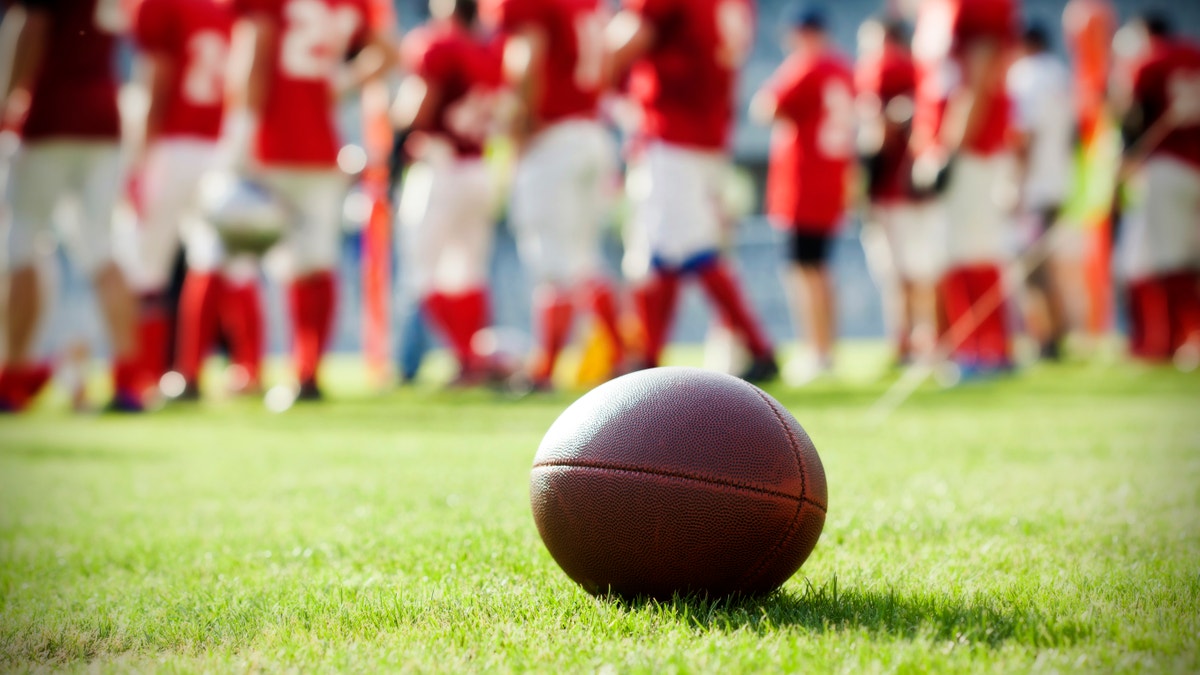
Close up of an american football on the field, players in the background (iStock)
Eight U.S states have laws requiring schools to give students extra help after a concussion, but a new study suggests these efforts may stop short of giving kids the support they need to succeed.
In most cases, these so-called "Return-to-Learn" laws hold schools responsible for helping injured students resume regular studies, the study found. But none of the laws spell out what support kids must get when their symptoms linger long after a concussion.
"State Return-to-Learn laws are vague, and not uniform in their target audience or recommendations," said senior study author Dr. Monica Vavilala of Harborview Injury Prevention and Research Center in Seattle.
"The focus around concussion is on return to play, and not Return-to-Learn," Vavilala added by email. "We think that Return-to-Learn should occur before return to play."
Each year, an estimated 1.1 million to 1.9 million children suffer a concussion that requires them to miss school. Afterward, they must figure out how to return to academics while they're also dealing with physical, cognitive, emotional and sleep-related problems stemming from the injury, researchers note in the journal Pediatrics.
Nine in 10 of these injured students still have at least one symptom-related academic issue when they return to school, researchers note.
But fewer than one in five schools have formal plans in place to help students navigate academics after a concussion, the authors also point out.
To assess the effectiveness of laws focused on the academic aspects of recovery, researchers examined laws on the books as of May 2016.
The study included laws in Illinois, Massachusetts, Maryland, Maine, Nebraska, New York, Virginia and Vermont.
Since then, one more state - Oklahoma - passed a Return-to-Learn law, Vavilala said.
Researchers considered laws to be focused on learning if they contained language mandating specific actions at the state, local or school level related to the academic reintegration of youth who have sustained a concussion.
While all eight state laws required the establishment of specific protocols for returning to academics, only half included any standards for what should be included, the study found.
Where they did exist, standards were vague, without any specific mechanism for assessing effectiveness or outcomes, the study found.
Only one state - Illinois - specified standards consistent with guidelines laid out by the U.S. Centers for Disease Control and Prevention for setting up post-concussion protocols.
One limitation of the study is that it only examined state laws, which may not account for policies in place at the local level or for individual schools, the authors note. They also lacked data on outcomes and on whether the laws worked well for individual students or at specific schools.
It's also possible there may not be a need for state laws to spell out the academic support students need after a concussion, a separate team of researchers argued in an accompanying editorial.
That's because most concussion symptoms resolve within three weeks, Dr. Mark Halstead, a sports medicine researcher at Washington University in St. Louis, Missouri, and colleagues write.
When symptoms linger, schools are already legally required to establish what's known as 504 Plans for students with substantial educational difficulties, the editorialists write. Federal civil rights laws also prohibit discrimination against students with disabilities.
"There is already legislation in place to help support students in the school setting, so the effort of additional legislation is really an effort of redundancy," Halstead said by email. "What needs to be done is making sure schools are aware and equipped on how best to make the typical temporary adjustments that may be necessary to help get kids through their schooling as they recover."
Concussion symptoms that hamper academics can sometimes be invisible, though, and may include headaches, dizziness, fatigue, emotional instability, and or sensitivity to noise or light, Vavilala said.
"We do not want to create disability when students recover and are no longer symptomatic but at the same time want to make sure students receive timely and carefully crafted best practice academic accommodations," Vavilala said.




















